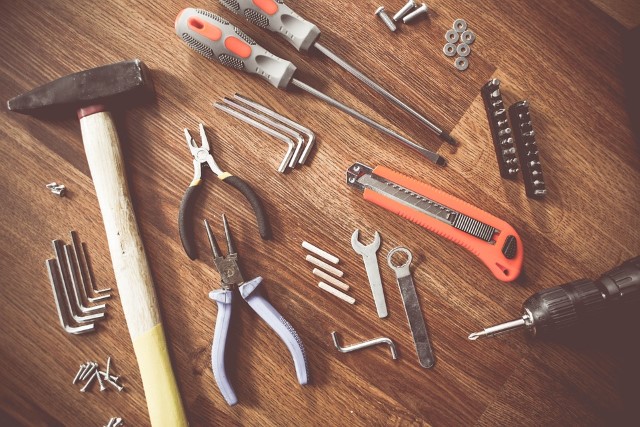Owning a home comes with a range of responsibilities, and being prepared with the right tools can make a significant difference in maintaining and improving your property. While it’s tempting to think of tools as mere conveniences, many are essential for ensuring the safety and longevity of your home. Here’s a guide to the must-have tools every homeowner should keep on hand, with a special emphasis on safety.
1. Basic Hand Tools
- Hammer: A versatile tool, a good hammer is essential for everything from hanging pictures to assembling furniture. Opt for one with a comfortable grip to prevent hand fatigue and avoid injury.
- Screwdrivers: A set of screwdrivers with various sizes and types (flathead and Phillips) will be indispensable for tightening screws and assembling items. Magnetic tips can help keep screws in place and reduce the risk of dropping them.
- Pliers: Pliers come in handy for gripping, twisting, and cutting. Keep a variety on hand, including needle-nose pliers and lineman’s pliers, to tackle different tasks safely.
- Adjustable Wrench: Useful for loosening or tightening nuts and bolts, an adjustable wrench can adapt to various sizes, making it a versatile addition to your toolkit.
2. Measuring and Marking Tools
- Tape Measure: Accurate measurements are crucial for any home improvement project. Choose a tape measure with a locking mechanism to ensure precision and ease of use.
- Level: A level helps ensure that surfaces are perfectly horizontal or vertical, preventing crooked shelves and misaligned fixtures. A laser level can offer added accuracy for larger projects.
- Utility Knife: Ideal for cutting materials such as cardboard, plastic, and even certain types of tape, a utility knife should always be used with caution. Ensure the blade is sharp and replace it when necessary to avoid accidents.
3. Safety Gear
- Safety Glasses: Protect your eyes from debris, dust, and splinters. Always wear safety glasses when using tools that could produce flying particles or when working in hazardous environments.
- Work Gloves: Gloves protect your hands from cuts, blisters, and splinters. Choose a pair that provides a good grip and is suited for the type of work you’ll be doing.
- Ear Protection: For tasks involving loud tools like saws or drills, ear protection can prevent hearing damage. Earplugs or earmuffs are essential for safeguarding your hearing health.
4. Power Tools
- Cordless Drill: A cordless drill is invaluable for drilling holes and driving screws. It’s a versatile tool that should come with a variety of drill bits and screwdriver bits for different applications.
- Saw: A handsaw is a basic necessity for cutting wood, but for more complex tasks, consider a circular saw or a jigsaw. Always follow the manufacturer’s safety guidelines when using power saws.
- Stud Finder: This tool helps locate studs behind walls, making it easier to securely hang heavy items. Accurate placement reduces the risk of damaging walls and ensures your installations are safe and stable.
5. Maintenance Tools
- Pipe Wrench: Essential for plumbing repairs, a pipe wrench helps grip and turn pipes and fittings. It’s crucial for addressing leaks or other plumbing issues.
- Flashlight: A reliable flashlight is indispensable for power outages or working in dimly lit areas. Opt for one with a long battery life and a bright beam to ensure visibility in emergencies.
- Fire Extinguisher: While not a traditional tool, a fire extinguisher is crucial for safety. Keep one in the kitchen and another on each floor of your home. Regularly check that they are fully charged and operational.
6. Clean-Up Tools
- Shop Vac: For dealing with dust, debris, and spills, a shop vac is more powerful than a regular vacuum cleaner. It’s ideal for cleaning up after DIY projects and maintaining a tidy workspace.
- Bucket and Mop: A bucket and mop are essential for keeping floors clean and safe. Ensure the mop is in good condition and replace it as needed to avoid spreading dirt and grime.
Conclusion
Having the right tools at your disposal not only makes home maintenance and repairs more manageable but also plays a critical role in ensuring your safety. By investing in high-quality hand tools, power tools, and safety gear, you can handle a variety of tasks with confidence and efficiency. Remember, safety always comes first—wear the appropriate protective gear, follow proper usage instructions, and keep your tools in good condition to protect yourself and your home.


Recent Comments